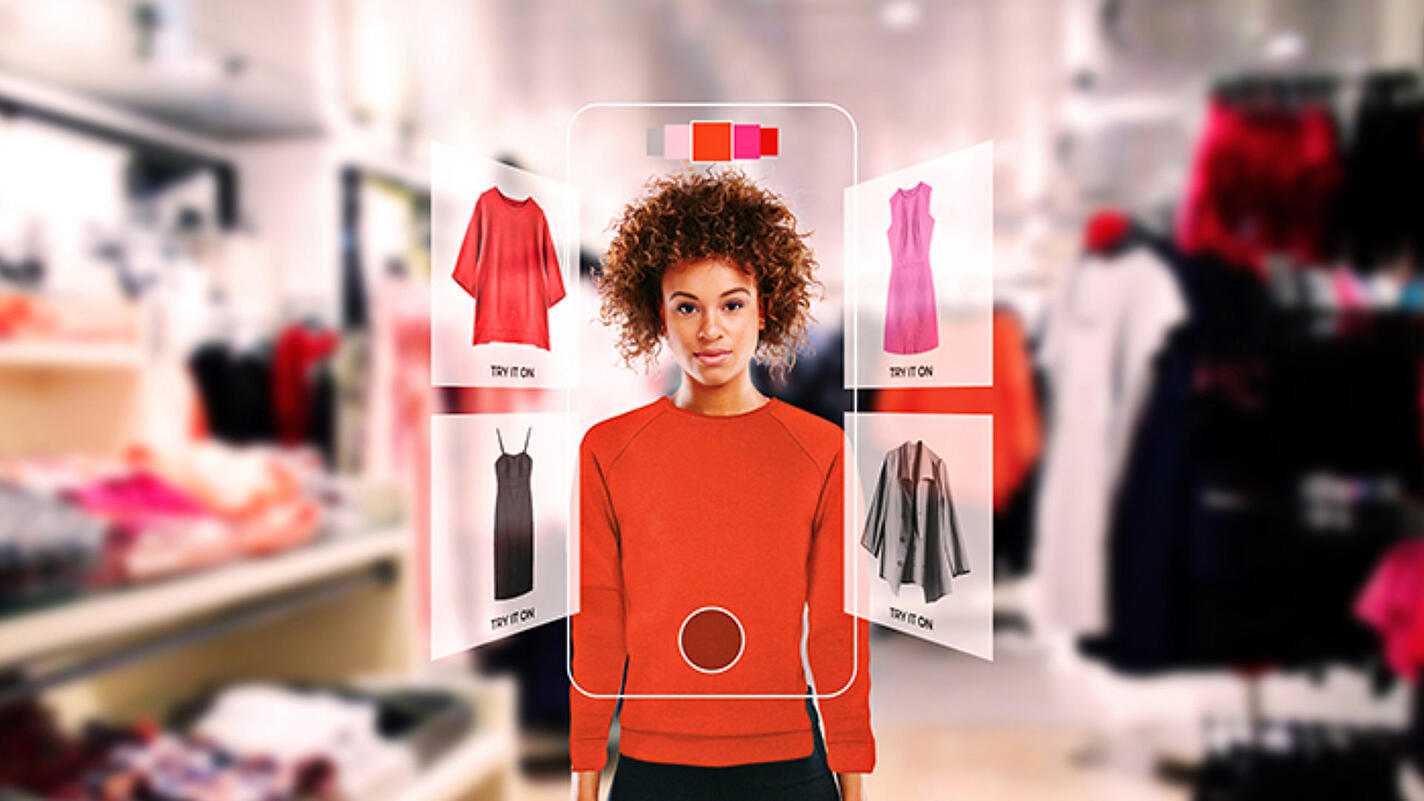What are virtual dressing rooms?
When was the last time you ordered clothes in an online store and were unsure whether the thing would suit you or not? And then upon receiving the order, tried it on and realized you had a good reason to be unsure? The color wasn’t right, the dress just didn’t fit, and overall, it didn’t do justice to your figure, so you had to ask for a refund.
And now imagine yourself clicking on yet another fashion website, adding the items you like to the wish list, pointing the camera at yourself and bingo! — you are already wearing the clothes you have just added to your cart!

Now you can immediately see whether a garment is flattering or not, and only order what you have liked the most.
How do virtual dressing rooms work?
We have already stated that augmented and virtual reality can help optimize the work of real-life businesses, virtual dressing rooms being a shining example of that.
Uniqlo was the first clothing brand to introduce such technologies back in 2012. Fitting rooms in their new flagship store in San Francisco were equipped with augmented reality LCD screens, and customers could try on things from the catalog on their reflection. Needless to say, the line was way around the block.

Uniqlo’s Magic Mirror allows you to try all the colors available in just a few clicks
With today’s technological advances, the need to create applications for customers to reap the benefits of online fitting without leaving home has become obvious.
The growth in demand for virtual fitting rooms peaked during the COVID-19 pandemic, when clothing sales fell by a whopping 43.5%. Due to lockdown, buyers were unable to purchase goods in stores, and even after the danger subsided, many still feared that going to the mall and trying on clothes could increase the risk of contracting the virus. More than half of all women and men (65% and 54%, respectively) say that they no longer feel safe trying on clothes in fitting rooms. Therefore, the idea of virtual fitting rooms was gaining popularity by the day.
The global virtual dressing room market is expected to go from $3 million in 2019 all the way to $6.5 million in 2025.
What is the technology behind virtual dressing rooms?
The customer stands in front of the camera and uses AI (artificial intelligence) or AR (augmented reality) to scan their body in 360 degrees, allowing for a 3D model to be designed with radio frequency identification (RFID). The latter is also responsible for scanning the products the customer has added to the virtual fitting room.
Finally, virtual reality technology overlays the scanned products on the 3D model of the customer, letting them understand how the garment will look on them without having to try it on in person.
What brands have online fitting rooms?
Wanna Kicks
Wannaby, a Belarusian startup company, was one of the first fashion brands to create its own app, which aims to make it easier to find the perfect sneakers. Wanna Kicks uses AR so that you can “try on” different pairs of sneakers in just a few clicks, and its catalog is constantly being updated with the coolest 3D models.

Gucci
Together with Snapchat, Gucci have created several pairs of AR shoes for customers to see how they would look on their feet. Shoppers can try on a digital version of the shoe and, if they like it, go to the online store to purchase the pair. Thanks to this project, Gucci has reached 18.9 million unique Snapchat users.

However, virtual fitting rooms exist not just for “trying on” physical clothes and shoes, but also so that you can get your hands on digital fashion that doesn’t exist in the real world.
Zero10
Zero10 is a new-generation digital fashion platform. The Zero10 app uses augmented reality, allowing shoppers to try on clothes in real-time using a phone camera and then publish their images on social media. Most digital fashion items can be tried on for free, the rest — for a small fee.
The app has a wardrobe feature where customers can buy and store their favorite virtual pieces “We are already working on the features that will allow users to use it not only for AR fitting and content creation, but also, for example, in games, to create their own customized items, to look at the new collections or even resell digital items,” Zero10 CEO added.

DressX
DressX is the world’s largest digital clothing marketplace that we have already mentioned in one of our previous articles. The marketplace also has its own app, which makes it possible to try on digital clothing in augmented reality, bringing virtual images into real life. The company’s ultimate goal is to replace at least 1% of the traditional physical pieces with a digital alternative for occasions such as photoshoots, online calls, and Zoom conferences.
DressX digital clothing has already been worn by many well-known fashion influencers, bloggers, artists, and other creators.

Sofi Tukker sporting DressX digital-only looks
The key to success in modern retail lies in providing customers with the shopping experience they dream of. It is all about convenience, and virtual fitting rooms are exactly the case. Online fitting can save time, stimulate online sales and reduce the number of returns and shipping costs all at the same time.
Fashion NFT items will grow more and more popular, and virtual fashion will become quite a bit easier if digital clothes are available for real-time wear. Get a taste of the future right here and now.



